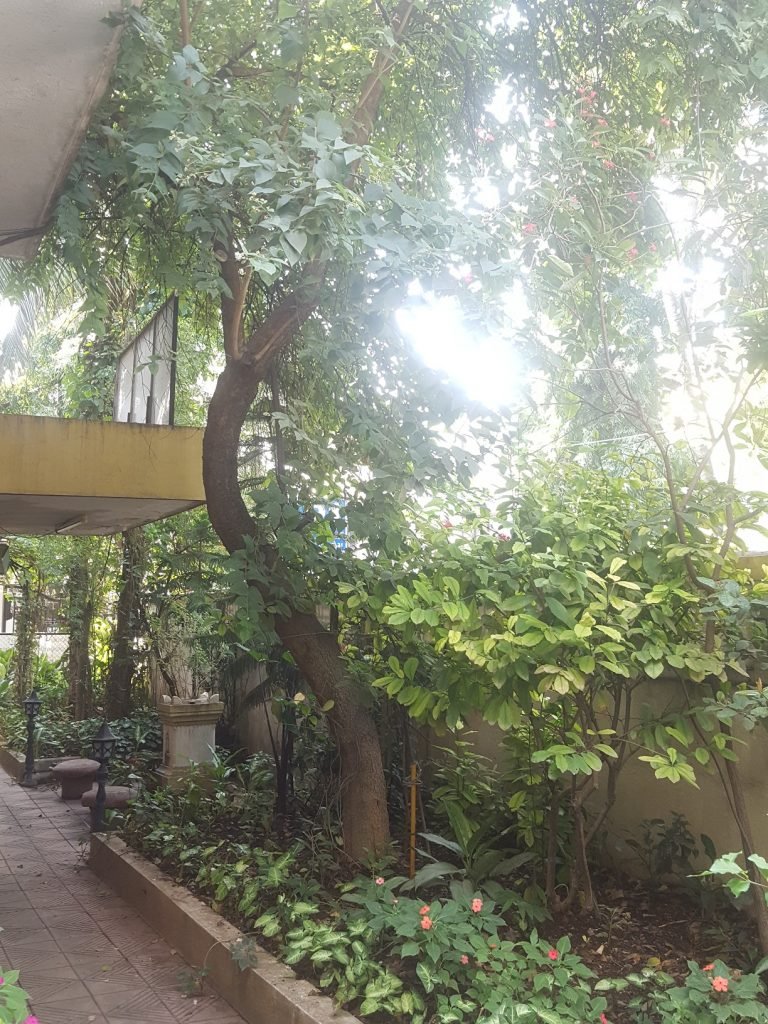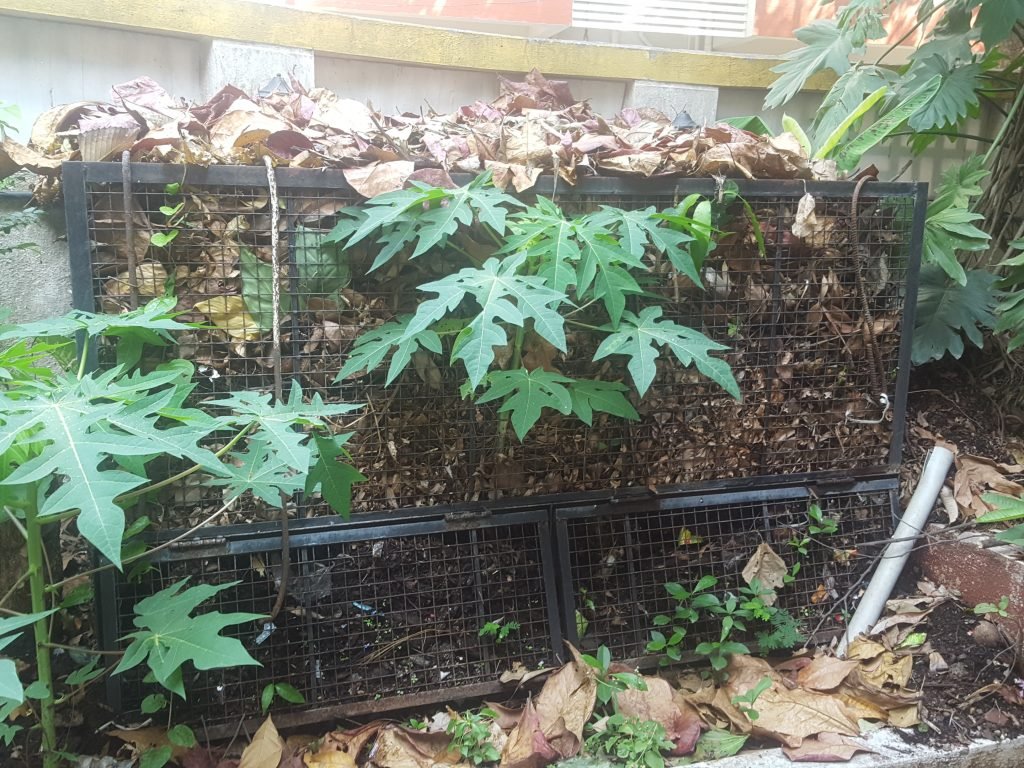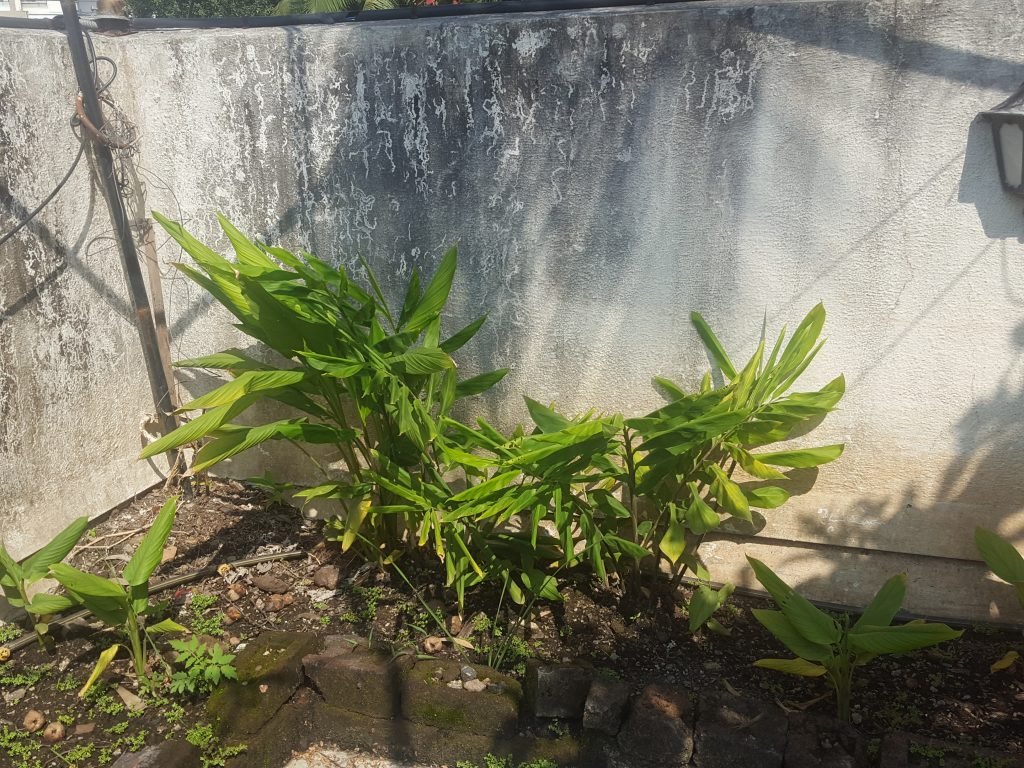Bharati Barhate, Pune
Take a turn into the lane from noisy Karve Road, with its heavy Pune traffic, impatient honking and entirely different world awaits you. It is the garden around the building or it is the building amidst the garden; difficult to tell the difference.
Meet Bharati Jawale-Barhate. She has done graduation in Botany, post-graduation in Environment Science. After completing Bachelor’s in Education, she was a Science and Mathematics teacher at a school for 10 years.
She stresses that ‘शेतकरी तणाची मशागत करतो, तर शिक्षक मनाची मशागत करतो’ meaning ‘A farmer takes care of body, a teacher takes care of mind’. Both these professions are vitally important and unfortunately both are equally neglected, looked down upon today.
Here is why and how Bharati started garden
She never ‘decided’ to create a garden. It was like a second nature to her. The house where she stays with her family now, belonged to her parents. This is where she grew up with her sisters, with a garden around the bungalow. From very young age she saw her mother working in the garden, making compost from dry leaves, garden and kitchen waste. They had Guava, Pomegranate, Custard Apple trees, various flowering plants and vegetables. Prior to that, family spent 14 years in Punjab, for her father’s job. There, they stayed in a British-style bungalow, with half an acre area around it. Her mother used to cultivate vegetables for the family there.
Later, in busy life, juggling between professional and domestic responsibilities, also Bharati continued with regular gardening Then, Sakal, the local newspaper began a series, where they covered experiences of various people having personal household gardens in the city, every day. That series motivated her to separate dry and wet waste
By this time city around had considerably changed. Bungalows gave way to tall buildings. There were a few additions to her bungalow as well. Ground area was reduced, buildings around blocked majority of sunlight. That’s when she decided to expand garden to the terrace as well, where plants would get enough sunlight.
Waterproofing
Our terraces are built to face 4 months of Monsoon, aren’t they? Water from garden should not be a problem, Bharati believes. She did not face problem of leakage due to terrace garden.
Planning
Like any other project, deciding objective is necessary for household garden. Here we do not have acres and acres of land at disposal. Hence to get maximum out of a few hundred sq. feet, we need to decide exactly what we wish to cultivate.
In her case, sunlight was the major deciding factor. Because of tall buildings around, ground receives scanty sunlight. Large trees, like coconut, flowering plant, Anant, grew tall to receive their required share of sunlight. Other plants that could grow are the shade-loving ones, mainly ornamental.
Have you felt very formal, out of place and awkward at some gatherings while at the same time, you are completely home at an informal gathering with friends and families, the people you love? When I looked at plants in her garden, I had exact feeling. Plants were completely at home, with the surrounding, the ones in the shade as well as the ones in the sun.

It has taken years of observation and caring to understand suitable conditions for different plants.
Bharati believes just like kids, plants too can feel when they are loved and cared.
Preparation
For soil-less gardens, some planning before-hand is necessary. Visit to nursery to buy plants and seeds is very exciting. But unlike soil garden, here we need to prepare compost before we can start plantation or sowing.


Betel leaf climber on the coconut tree

Papaya plants on the terrace
How does she prepare compost?
Compost is prepared using dry leaves and kitchen waste. Bharati proudly says that hardly anything is thrown out from her house. Even coconut shells, fronds are used in compost. They take longer to decompose, but what’s the rush?
She gives credit of this thinking to her mother. Using, re-using resources was imbibed on her since childhood. Her mother practiced all this, years before awareness about segregation, dry waste and wet waste started.
She shares that after her father passed away, she did not know what to do with his pure woolen suits. Since it was natural wool, and hence biodegradable; she decided to bury it in her garden.
And that’s what she did. It feels nice to know that trees blossom today on that patch.
Anything biodegradable, will eventually decompose, isn’t it? She feels there is a gap between ‘learning’ and ‘how we apply what we learnt’. We have knowledge, but we do not apply it in our day-today-life.
Initially she practiced heap composting. Now she uses metal composter that she got specially made. It has 2 doors near the bottom, to take out ready compost. It is a bottom-less composter, allowing contact with soil. Soil contains a variety of microbes which aid composting. Inora compost culture, a powder with microbes is used to speed up the process further. It takes 1.5 to 2 months for the process.

Metal composter, with doors below to take out ready compost. Notice Papaya and Jamoon saplings that have sprouted from the seeds that went with kitchen waste. Life will find a way – Michael Crichton, Jurassic Park.
Preparing plant beds and containers
Bharati’s garden comprises of plants beds and containers.

Notice height of the bed. It is just 6 inches. It is a myth that tree roots need to go deeper. If required nutrients are provided, why would they need to go deep instead of spreading side-wise?

At the base of bed/ container, usually things that do not decompose or that decompose slow are placed. Ideally coconut shells and coconut leaf parts are used. Being porous, they allow excess water to flow out, being slow to degrade, they offer aeration and prevent compaction.
Bharati has 3 coconut trees in her garden. She places coconut husk at the base of the containers. Then compost made from dry leaves and kitchen waste is added.
Compost has advantage over soil here. It is much lighter compared to soil and hence handling is easy. Also, it never compacts as soil does. Thus, roots get much needed aeration when compost is used.
Bharati strongly advises against buying soil. For details about soil-less garden, do read our blog, https://brownleaf.org/gardens-without-soil-why-and-how/
She uses old paint containers as planters. They are designed to store paint, so they are sturdy by design. Sun does not affect the plastic. Also, the notches near the upper edge, makes it easy to carry it.

If their look is not appealing, we can always paint them/ decorate them/ place other smaller containers around them. Have fun-time with kids and their friends, painting them, why not?
This is yet another perk of a garden, it stimulates creativity, Sky is the limit, literally 😊


decoration with Vinca flowers

decoration with Parijat flowers
Where to get dry leaves?
All the dry leaves from her garden as well as leaves from the lane go in the composter. Bharati made this arrangement with the municipality appointed sweeper. Every day as part of her job, when sweeps the lane, she puts collected leaves in this composter. Otherwise all these leaves are collected and are sent to the dump-yard.
Not a single leaf from her garden or her lane is burnt or dumped. All of them go back to soil, nourishing it.
At times, she has even collected leaves from other people and utilized them in her garden, when convincing them about not burning leaves did not work.
For details about “dry leaves donation”, https://brownleaf.org/donate/
Regular Care
Enough sunlight and water are vital for plant growth. Compost needs to be regularly added to the container.
Watering
Drip and sprinkler irrigation is the way to go. It provides moisture which is required by the roots.

Mulching helps soil retain moisture and thus water is conserved. Let leaves that fall in the plant bed be. Don’t sweep them off. To read more about mulching, do read our blog, https://brownleaf.org/mulch/
Challenges
Common pest like white flies is frequent visitor. Bharati has experimented with tobacco water spray and found it quite effective. Although she finds it easier to just pluck the infected leaves and put them in the compost. Heat produced during decomposing process kills it off and we have nothing to worry about.
Produce from terrace garden

Vegetables
Brinjal, Chilies, Beans, Ridge Gourd, Drum Sticks, Taro, Sweet Potato, Tomatoes, Cabbage, Bottle Gourd, Onion leaves, Mustard Seeds
Fruits
Guava, Papaya, Banana, Singapore Cherry, Mulberry, Cherry, Coconut, Mango, Amla, Passion Fruit
Flowers
Anthurium, Water Lily, Parijatak, Anant, Balsm, Vinka, Rose, Magnolia, Hibiscus and many more

Turmeric is also cultivated on the terrace
Bharati stresses that Turmeric and Chili Powder should be home-made. In ready-made powders, a lot of adulteration happens. Turmeric is very effective anti-septic that must be part of first-aid box. Way to ensure quality is cultivate it yourself.
In addition to the produce, birds and butterflies are the colorful bonus of the garden. Terrace gardens provide habitat to them. Koel pair, Grey Hornbill, Sunbirds, Bulbuls, Crow Pheasant, Myna, Crows, Bharadhwaj , Family of Squirrels are the common visitors. They happily feast on various fruits in her garden and she is equally happy to let them.
Concluding Words
Raised by parents who believed in Gandhian philosophy, Bharati says one should not be ashamed of work. She looks after her garden herself.
She also feels gardening inculcates generosity. It feels nice to share the garden produce with friends and family, also exchanging seeds and saplings. It increases interactions with your friends and Relatives which is very necessary in today’s world.

Aditi Deodhar
Creator, Brown Leaf


